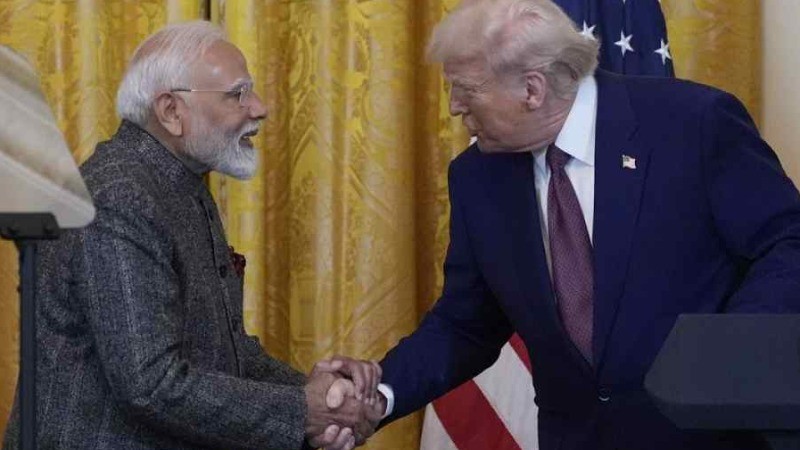
WASHINGTON: Prime Minister Narendra Modi met US President Donald Trump at the White House in Washington, DC, on Friday (Indian time). They talked about making the relationship between India and the US stronger in different areas.
Both leaders shared pictures from their meeting on social media.
During their discussion, they spoke about trade, defense, technology, energy, and security. They also talked about global and regional issues that matter to both countries.
After the meeting, Modi said he had a great discussion with Trump. He shared on social media that their talks would help strengthen the friendship between India and the US.
Modi also said that India and the US want to double their trade to $500 billion by 2030. He added that both countries will soon finalize a trade deal that benefits both sides.
Just hours before meeting Indian Prime Minister Narendra Modi, US President Donald Trump made a strong statement on social media about tariffs. He posted, "Three great weeks, perhaps the best ever, but today is the big one: reciprocal tariffs!!! Make America great again!!!"
What Are Reciprocal Tariffs?
Trump has already imposed tariffs on all steel and aluminum imports starting March 12, added 10% tariffs on Chinese goods, and placed a temporary hold on tariffs for Canada and Mexico. Now, he is pushing for "reciprocal tariffs."
Reciprocal tariffs mean that the US will charge the same tariffs on goods from other countries as they impose on American products. For example, if India puts a 25% tariff on American electronics, the US will do the same for Indian electronics.
Why Is Trump Focused on This?
Trump believes that other countries impose higher tariffs on the US while the US charges lower rates in return. He argues that matching tariffs will make trade fairer and could bring more money into the US government.
White House press secretary Karoline Leavitt said, "This is something the president strongly believes in. Other nations have been taking advantage of the US, and this policy will help American workers and strengthen national security."
The US generally has lower tariffs compared to other nations. For example, the European Union charges 10% on cars imported from the US, while the US only charges 2.5% on European cars. Trump has repeatedly said that such differences are unfair.
During his election campaign, Trump stated, "If India, China, or any other country puts a 100% or 200% tariff on American products, we will do the same to them. An eye for an eye, a tariff for a tariff, same percentage."
Under the Trump Reciprocal Trade Act, countries would have two choices: either remove their tariffs on US goods or pay the US the same amount in return.
Challenges in Implementing Reciprocal Tariffs
Imposing reciprocal tariffs can be complicated because every country has different tax rates for the same goods. Trade experts say it would be difficult to structure such a policy.
Some US officials might push for a simpler approach, like a flat 10% or 20% tariff, instead of matching each country’s tariff one by one. Damon Pike, a trade expert, said, "Every country has different duty rates. Trying to match them exactly is a massive task."
Trump’s economic advisors, Peter Navarro and Kevin Hassett, told CNN that discussions were ongoing. Hassett suggested that instead of implementing tariffs immediately, the US might first launch an investigation into how to apply them.
What Could Happen Next?
If Trump enforces reciprocal tariffs, American businesses and consumers could end up paying higher prices. The US imported goods worth $4.1 trillion last year, so new tariffs could significantly impact prices.
Other countries may also respond with their own tariffs, which could hurt global trade. This could change how the US deals with both allies and competitors in the future.